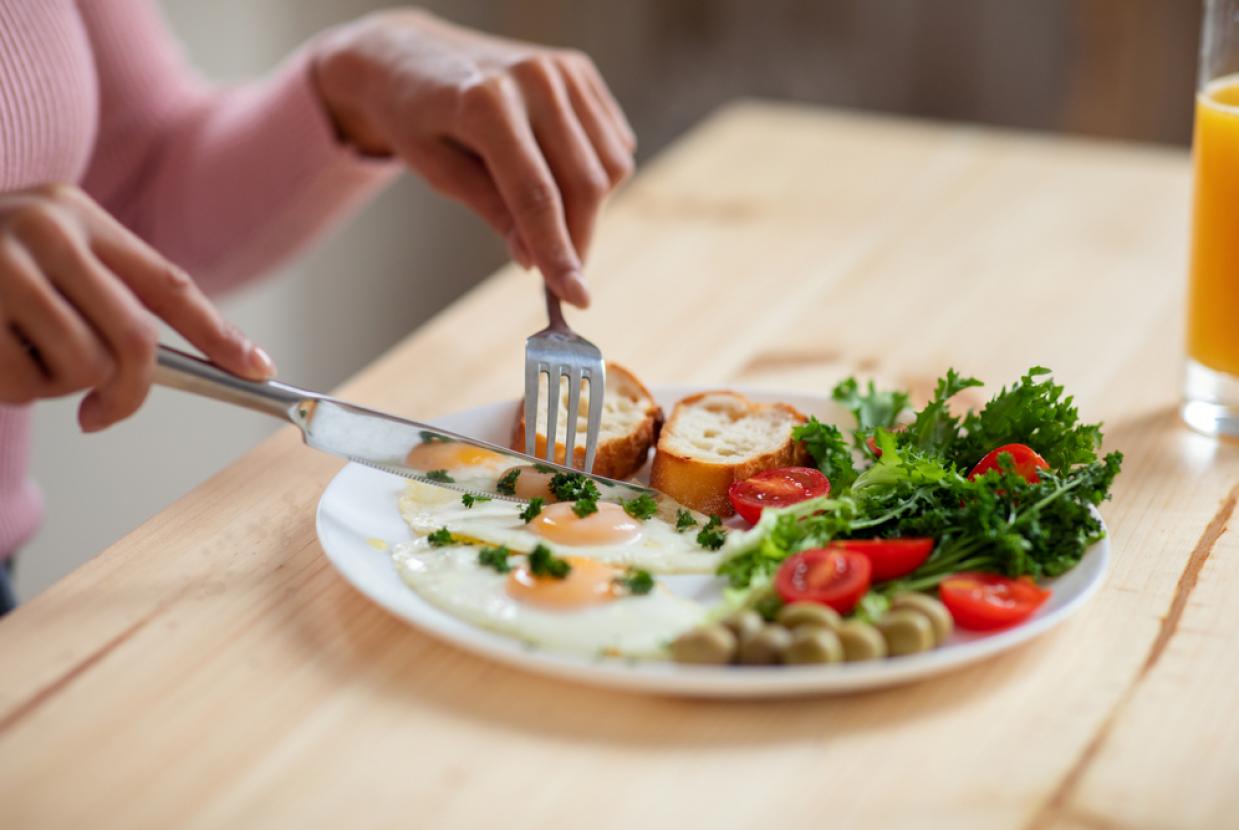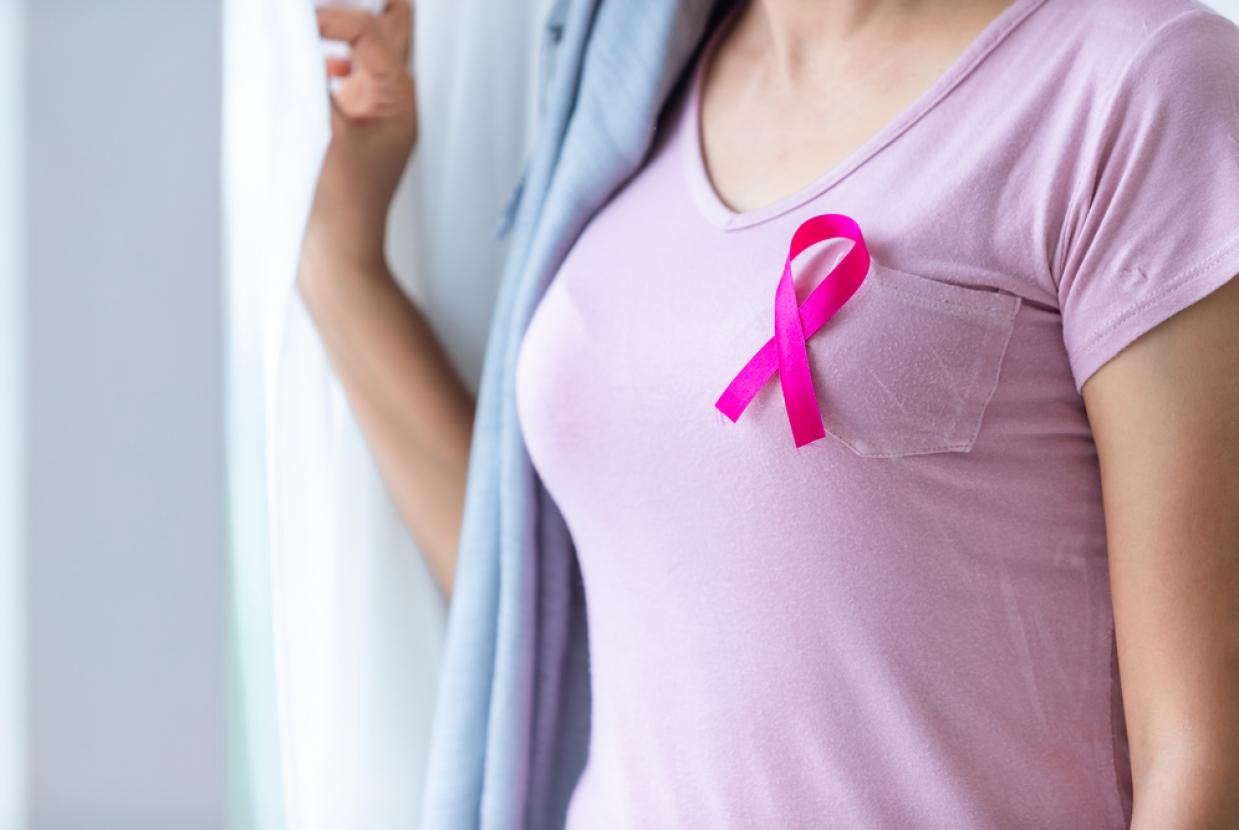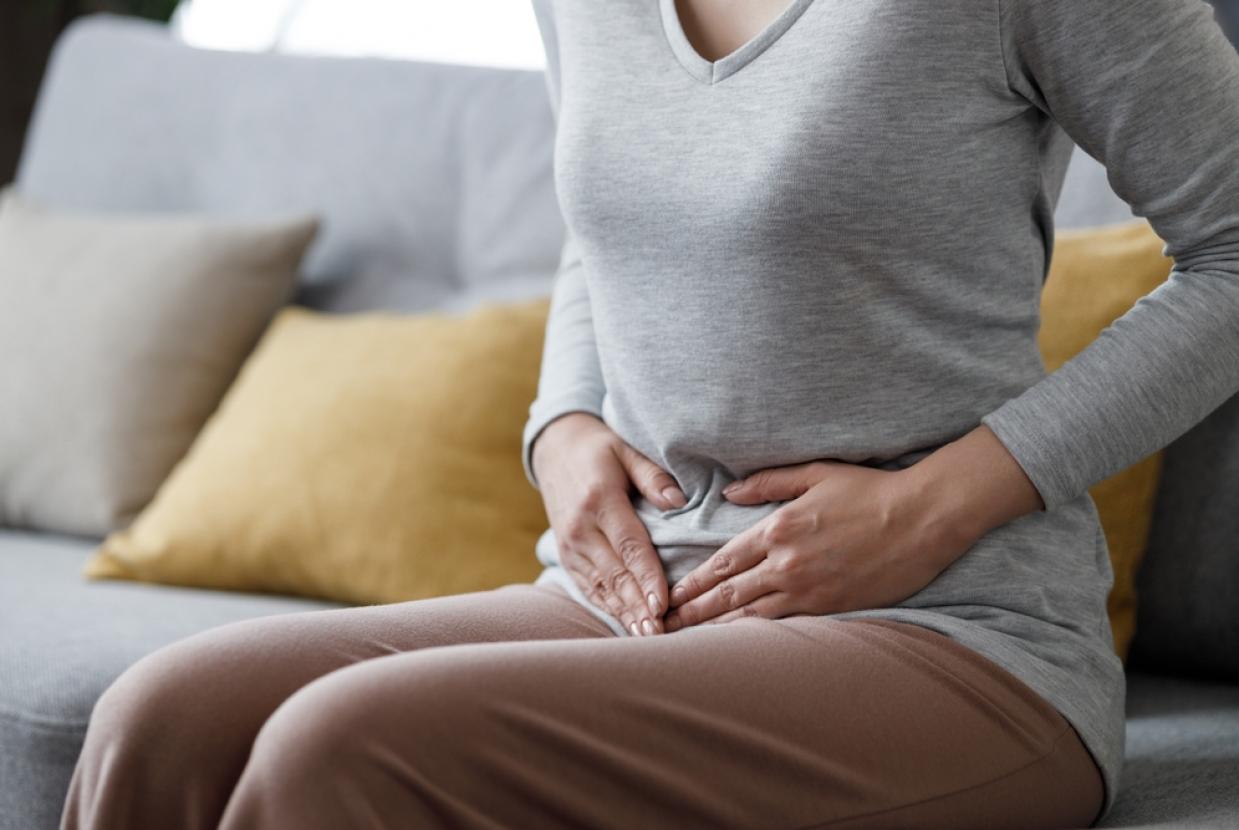Nutrition For Women
Recommendations for nutrients are a guideline, not a target, because everyone is individual and will vary in size and activity levels. As a guide, the government dietary recommendations for adult women (per day) are:
Energy | 2000kcal |
Fat | No more than 78g (or 35% food energy) |
Saturated fat | No more than 24g (or 11% food energy) |
Carbohydrate | At least 267g (or 50% food energy) |
Free sugars | No more than 27g (or 5% food energy) |
Protein | 45g |
Fibre | 30g |
Salt | No more than 6g |
Vitamin A | 600µg/d |
Thiamin | 0.8mg/d |
Riboflavin | 1.1mg/d |
Niacin | 13.2mg/d |
Vitamin B6 | 1.2mg/d |
Folate | 200µg/d* |
Vitamin B12 | 1.5µg/d |
Vitamin C | 40mg/d |
Vitamin D | 10µg/d |
Calcium | 700mg/d |
Phosphorus | 550mg/d |
Magnesium | 270mg/d |
Potassium | 3500mg/d |
Iron | 14.8mg/d (19-50 years) 8.7mg/d (50+ years) |
Zinc | 7.0mg/d |
Copper | 1.2mg/d |
Selenium | 60µg/d |
Iodine | 140µg/d |
*Folate: It is recommended that women of childbearing age take a 400µg folic acid supplement daily until the 12th week of pregnancy. This is to help prevent birth defects of the central nervous system, such as spina bifida, in the baby.
These values are known as reference nutrient intakes (RNIs), the amount of a nutrient that is needed to ensure that the needs of nearly all of the population group (97.5%) are being met. RNIs are not recommendations for individual people but estimates of the requirements for groups of people.
Some nutrient requirements are higher during pregnancy and breastfeeding. For more information read our pages on nutrition during pregnancy.
Iron intakes
Iron is important for the development of red blood cells, which carry oxygen around the body. It also helps the immune system work as it should and can help to reduce tiredness. Adult women aged 19-50 years have higher requirements for iron compared to men and older women. This is because menstruation (a woman's monthly period) can use up your iron reserve, especially if you have heavy periods or have a diet low in iron.
Over a quarter of women may have inadequate iron intakes. Low iron intake increases the risk of iron deficiency anaemia.
How to increase your iron intake
Iron can be found in offal (like liver and kidney), red meat, fish and shellfish (such as canned sardines, cockles and mussels), beans, pulses, nuts and seeds, quinoa, wholemeal bread and dried fruit.
Although liver is a good source of iron, you should avoid it if you are pregnant. This is because liver is also rich in vitamin A which, in large amounts, can harm your unborn baby.
Iron found in plant foods is less readily absorbed than that from animal products like meat and eggs. So if you are vegetarian or vegan you may need to be particularly careful to make sure you get enough iron in your diet. However, vitamin C can help your body to absorb iron from plant sources so try to combine foods or drinks high in vitamin C with those containing iron, for example adding broccoli into a bean casserole or red pepper to a tofu stir-fry.
Tea and coffee contain polyphenols (plant compounds) which can bind to iron and reduce how much of it is absorbed into the body so try to avoid drinking them with your meals.
Calcium intakes
Around 1 in 10 adult women have intakes of calcium which are likely to be inadequate. Try and make sure you have enough calcium in your diet. Calcium helps to maintain strong bones and teeth as well supporting the normal functioning of nerves and muscles.
Calcium is particularly important for women because, compared to men, they are at higher risk of osteoporosis (fragile bones) as they get older.
How to increase your calcium intake
Calcium is found in:
- milk, cheese, yogurt, fromage frais
- some green leafy vegetables (such as kale and rocket)
- calcium-fortified dairy alternatives such as soy drinks and yogurts (check the label)
- canned fish (where soft bones are eaten)
- breads (white, brown and wholegrain)
What are women currently eating in the UK?
Let’s look at what dietary survey data suggest about what women are eating in the UK, in comparison to what is recommended.
Fruit and vegetables
We should all try and eat at least five portions of fruit and vegetables every day (80g is one portion). This can help to reduce the risk of serious health problems, such as heart disease, stroke and some cancers. However, only around a quarter of women are meeting this recommendation.
How can you meet the recommendation?
A few small changes can help you meet the recommendation for fruit and vegetables.
- Try including at least one portion in each meal and snack.
- Fresh, frozen, canned and dried all count and they do not have to be eaten on their own - it also counts if they're part of a dish (such as in a pasta or curry dish).
Oily fish
Did you know? In the UK, 1 in 11 women die from heart disease. A healthy diet should include at least one portion (140g cooked weight) of oily fish a week. That’s because oily fish – such as salmon and mackerel – is rich in long-chain omega-3 fatty acids, which may help to keep your heart healthy.
During pregnancy and breastfeeding, omega-3 fatty acids found in oily fish are important for the normal development of your baby’s brain and eyes. The average intake of oily fish for women is 56g per week, well below the current recommendation.
How can you meet the recommendation?
Oily fish is very versatile; try some in a stir-fry, rice dish, in a sandwich or on toast!
As oily fish can contain low levels of pollutants that can build up in the body, the general population is advised to have no more than four portions of oily fish a week. Women who are planning a pregnancy or who are pregnant or breastfeeding should eat no more than two portions of oily fish a week.
Fibre
Did you know? 1 in 19 women are diagnosed with bowel cancer during their lifetime.
High fibre intakes may reduce the risk of heart disease, type 2 diabetes and bowel cancer. Dietary fibre is also important for gut health and can reduce the risk of constipation.Adults are recommended to have at least 30g of fibre in their diet each day. Average intakes are well below recommendations, with women managing only around 17g of dietary fibre per day.
Dietary fibre can be found in:
- wholegrain and high-fibre varieties of starchy carbohydrates such as wholegrain bread, wholewheat pasta, potatoes with skins on and high-fibre breakfast cereals
- beans and pulses
- nuts and seeds
- fruits and vegetables
How can you meet the recommendation?
Top tips for increasing your dietary fibre intake:
- SWITCH white rice for brown/wild rice, quinoa or buckwheat
- SNACK ON fresh fruit instead of cake and biscuits
- CHOOSE high-fibre breakfast cereals such as wholewheat flakes, no added sugar muesli or fruit wheats
- REPLACE some of the meat in dishes with veg and beans
- SWAP roast potatoes for baked or new potatoes with skins
- SWITCH to wholewheat pasta
- EAT wholegrain or seeded loaves instead of white
- DO NOT PEEL potatoes – wash well, cook and eat them with the skin on
- USE wholemeal flour in baking (or use half white, half wholemeal)
- ADD dried fruit, unsalted nuts or seeds to plain low-fat yogurt
- READ nutrition information on food labels and choose those with the most fibre (as long as sugars, salt and saturated fat content is not higher)
Sugars
You may have heard that we should be eating less sugar in our diet. This refers to free sugars.
Free sugars includes all added sugars in foods and drinks in whatever form including table sugar, honey, syrups, and nectars, as well as the sugars naturally present in fruit, vegetable and pulses (for example soy, chickpeas) that have been juiced, pureed or made into pastes. Ingredients added such as lactose and galactose are also considered to be free sugars.
Intake of free sugars should provide no more than 5% of total energy intake, which for women means no more than 27g per day. On average, women are consuming around double the recommended limit.
Many foods and drinks that contain free sugars can be high in energy (calories). Having these foods or drinks too often can mean you consume more calories than you need. The amount and frequency of foods and drinks with free sugars we consume can also increase the risk of dental decay.





















































































































